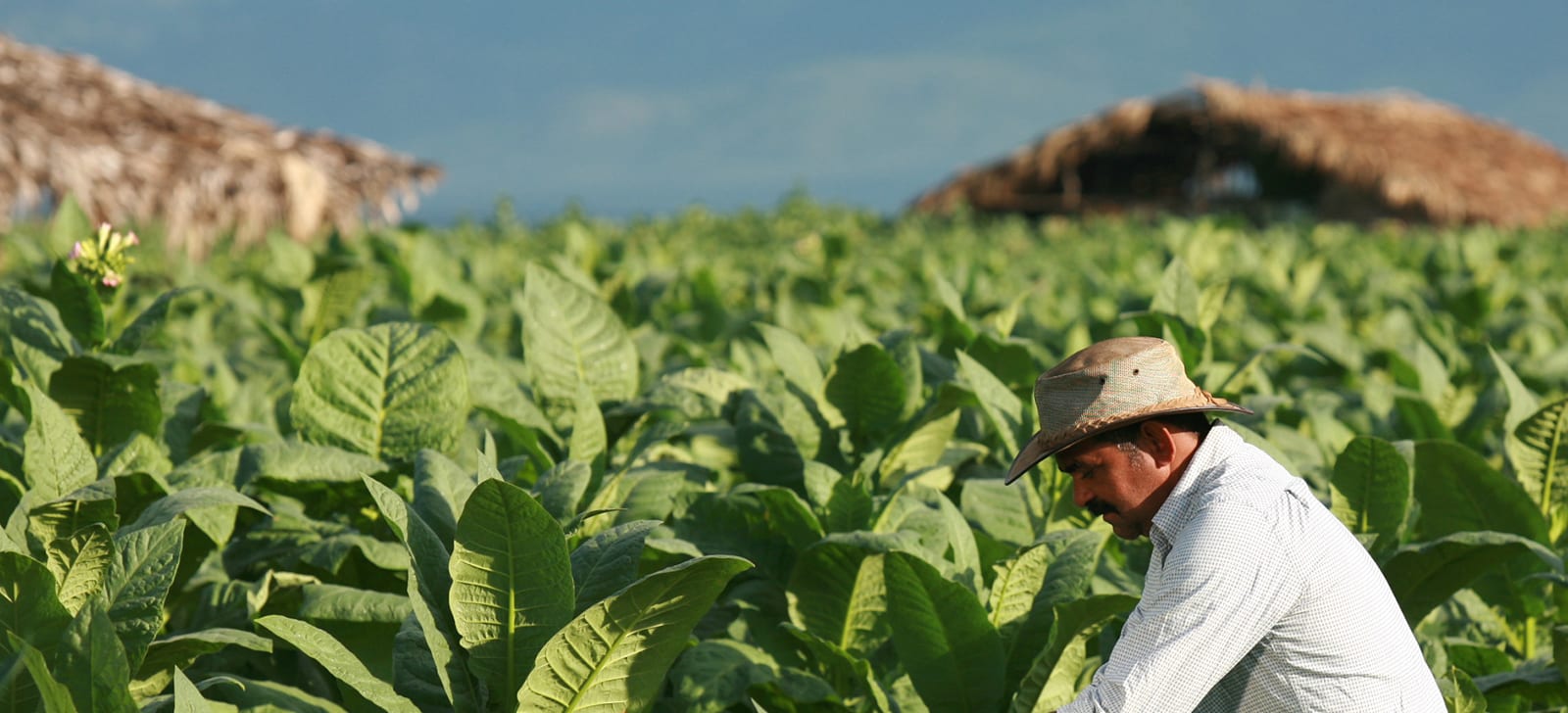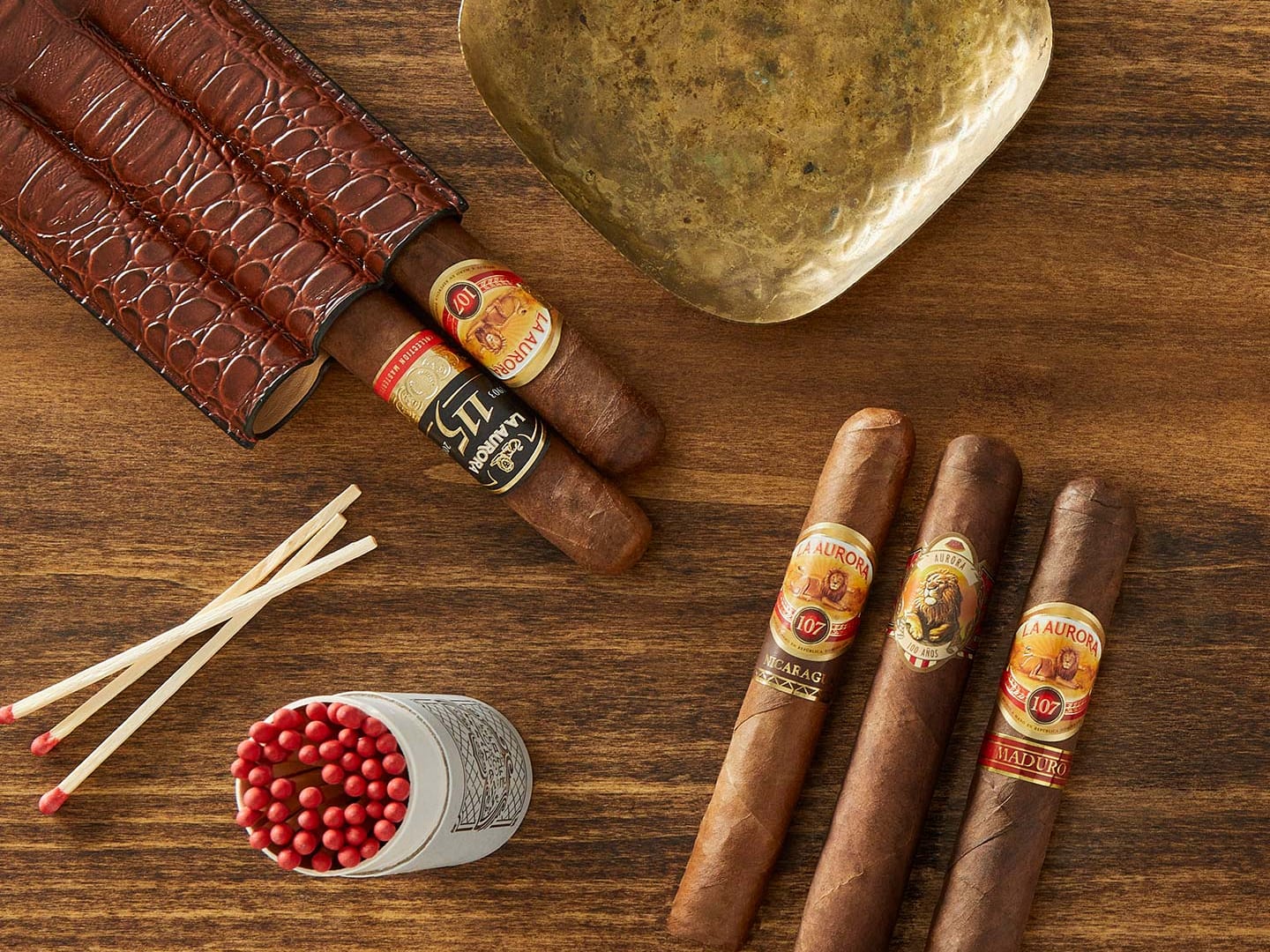From Seed To Store: How La Aurora Cigars Are Made
Jun 2nd, 2023
Building a cigar is no easy feat. First, the tobacco needs to be harvested, collected, and prepared. This includes an intensive process of curing, aging, fermentation, and de-stemming the tobacco until it comes to fruition in a beautifully rolled cigar. The La Aurora cigar factory has been operating since 1903, and we’ve remained the original masters of Dominican cigars over the course of the past century. The La Aurora factory is located in the Zona Franka Tamboril, on the road from Santiago to Tamboril in Santiago de los Caballeros.

Santiago de los Caballeros has been dubbed the world's cigar capital, and nearly half of the cigars produced in this world are Dominican. The majority of those stogies come right out of La Aurora Cigar Factory. For Dominicans, cigars aren’t just something you enjoy smoking. They represent the culture of this Caribbean nation, going all the way back to colonial times. The DR, previously known as the Spanish colony of Santo Domingo, was where Europeans cultivated the world’s first commercial tobacco, and it’s been a staple to the Dominican economy ever since.
The process involves tobacco seeds, a curing barn, and aging rooms, but the pressing and rolling floor is where much of the magic visibly happens. Folks touring the historic La Aurora factory will enjoy a sensory experience, composed of rich and complex tobacco blends amidst the majestic Dominican backdrop. In this space, master rollers use their years of expertise to make cigars. If you take a tour at La Aurora, you can see this impressive room first-hand and even chat with one of the cigar rollers.
Giving thanks to the land
What exactly is in cigar tobacco? Without the environment, we wouldn’t have this precious crop. Although we’re going to dive into how these timeless cigars are made, it’s important to appreciate all the features of the tobaccos prior to processing. Without these important factors, there would be no quality cigars.
Land: The land on which the tobacco is grown plays a major role since various locations contain various nutrients and aromas. Nicaraguan, Cuban, and Dominican land all offer different tastes and scents.
Seeds: Tobacco starts out as a tiny seed, and different seeds can provide a range of sensations in the mouth. Some seeds are strong, while others are more aromatic.
Climate: Just like the land, different climates provide different results. Lots of sunlight means thick and flavorful tobacco, but it may not burn well. Lots of rain, on the other hand, makes for thin tobacco. This will combust better but turn out flavorless. For this reason, the right amount of rain and sun is essential.
How is a cigar made?
What is in a cigar and how is the process of making one carried out? Read on to find out. La Aurora utilizes the oldest tobacco-processing method in the Dominican Republic, known as the Andullo. This handcrafted process allows for a stronger and headier cigar. The Andulla process goes as follows:
- Harvesting: For this step, the first six leaves of the tobacco plant are removed. Just the plant’s upper middle and top leaves are used since they’re strong, more flavorful, and have a better aroma.
- Curing: Tobacco leaves are tied into bundles, or gavillas. Then, they make sartas by stringing the leaves with ropes. Each sarta holds approximately 55-60 bundles, totaling to about three meters. Then, the leaves are hung for a couple of weeks in curing warehouses to increase flexibility so that they fold more easily. In this process, leaves go from green to yellow and finally to brown in the final step.
- Leaf Midrib Removal: After the leaves have cured, the sartas are removed from drying slots, and three-quarters of the leaf gets cleared off from the coarse central vein, also known as the midrib. The cleared-off tobacco is then weighed. The ideal quantity for 1 sarta is around 30 pounds.
- Preparation: Next, tobacco is placed in the leaves of the Palma Real, or yaguas, which is a type of palm tree. Yagauas can be up to two meters in length and help the tobacco cure and ferment due to their organic nature that lets the tobacco breath in this casing.
- Pressing: Once the tobacco is rolled up in the Yagua, ropes are squeezed tight around the Yagua, and the pressing stage. This is done up to five times until the tobacco has fully dried, and the Yagua must be replaced if it’s damaged. After the second pressing, the Yagua is untied and re-tied monthly until the fifth pressing, when the tobacco gets some oxygen and starts to compact. Pressing helps the tobacco cure and ferment in a uniform way.
- Aging: After the final pressing, the aging process begins. This continues until the tobacco is filled, dried, and matured, adding flavor and strength to the tobacco. Some tobacco in La Aurora cigars is aged up to five years before it's aged again in wooden rum barrels. La Aurora is the only manufacturer to use a double aging process for our super-premium lines.

What is the cigar-rolling process?
What helps La Aurora stand out is that they’re handcrafted instead of machine-made. When made in a machine, chopped-up tobacco is used for filler, and tobacco-leaf pulp is used for the wrapper. La Aurora, on the other hand, exclusively hand-rolls and uses unique blends of the highest quality long-filler tobacco for each of our cigars. We also use only the most experienced cigar rollers, otherwise known as torcedores.
First, the filler must be molded into a cylinder so air can still run through it. for a satisfying draw. Afterward, the binder is placed over the filler, and the cigar is molded. This leaf, otherwise known as the Capote, holds the blend.
Next, the torcedor molds the cigar with a cigar knife. After this step, cigars are placed in a mold and pressed. The wrapper leaf then needs to be prepped, cut, and rolled over the cigar, which takes some serious skills. Finally, the cigar cap is created, and the stogie is cut to the right measurement.
La Aurora cigars are always maintained at the perfect humidity level for the tobacco to age the cigars. For some of these smokes, this aging process takes years to complete.
All of this shows that tobacco requires patience, and when it’s provided, the results are stunning. Ultimately, the attention to detail at the La Aurora factory makes for some of the best artisanal cigars in the world.









